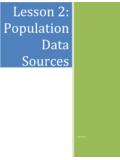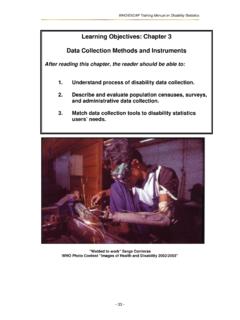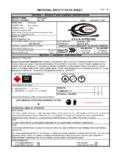Transcription of Safety Data Sheet: methanol - BioMCN
1 BioMethanol Chemie Nederland ( BioMCN )Oosterhorn 109936 HD Farmsum251 Netherlands Telephone: +31 (0) 88 664 7700e-mail: SECTION 1: Identification of the substance/mixture and of the identifierIdentification of the substanceMethanolRegistration number (REACH)01-2119433307-44-xxxxEC number200-659-6 CAS number67-56-1 Alternative name(s) identified uses of the substance or mixture and uses advised againstRelevant identified usesProfessional useIndustrial useSee attached exposure of the supplier of the Safety data sheete-mail (competent telephone numberEmergency information service+31 (0) 88 664 7700 This number is only available during the following office hours: Mon-Fri 09:00 - 17:00 Poison centreCountryNameTelephoneUnited KingdomNational Poisons Information Service (NPIS)(medical professionals only)0344-8920111 United KingdomNHS(general public)non-emergency: 111 or a doctor;emergency: 999 SECTION 2: Hazards of the substance or mixtureClassification according to Regulation (EC) No 1272/2008 (CLP)SectionHazard classCategoryHazard class andcategoryHazard liquid2 Flam.)
2 Liq. toxicity (oral)3 Acute Tox. toxicity (dermal)3 Acute Tox. toxicity (inhal.)3 Acute Tox. target organ toxicity - single exposure1 STOT SE 1H370 Safety data Sheetacc. to Regulation (EC) No. 1907/2006 (REACH)MethanolVersion number: GHS version of: 2011-04-05 (2)Revision: 2016-08-10 United Kingdom: enPage: 1 / 15 For full text of abbreviations: see SECTION 16. Immediate effects can be expected after short-term exposure. The product is combustible and can be ignited by potential igni-tion sources. According to the results of its assessment, this substance is not a PBT or a vPvB. According to the results of its assessment, this substance is not a PBT or a vPvB. According to the results of its assessment,this substance is not a PBT or a vPvB. The most important adverse physicochemical, human health and environmental effectsAdditional elementsLabelling according to Regulation (EC) No 1272/2008 (CLP)- signal worddanger- pictogramsGHS02, GHS06,GHS08 - hazard statementsH225 Highly flammable liquid and +H311+H331 Toxic if swallowed, in contact with skin or if damage to organs (eye, heart, brain, liver, central nervous system).
3 - precautionary statementsP210 Keep away from heat, hot surfaces, sparks, open flames and other ignition sources. No explosion-proof electrical/ventilating/lighting/ not breathe mist/ protective gloves/protective clothing/eye protection/face +P310IF SWALLOWED: Immediately call a POISON CENTER/doctor/..P303+P361+P353IF ON SKIN (or hair): take off immediately all contaminated clothing. Rinse skin with +P340IF INHALED: Remove person to fresh air and keep comfortable for +P235 Store in a well-ventilated place. Keep of contents/container to .. hazardsResults of PBT and vPvB assessmentSECTION 3: Composition/information on of substancemethanolIdentifiersREACH Reg. No01-2119433307-44-xxxxCAS No67-56-1EC No200-659-6 Index No603-001-00-XPurity100 %Molecular formulaCH4 OMolar g/molStructural formulaSafety data Sheetacc. to Regulation (EC) No. 1907/2006 (REACH)MethanolVersion number: GHS version of: 2011-04-05 (2)Revision: 2016-08-10 United Kingdom: enPage: 2 / 15 All the percentages given are percentages by weight unless stated otherwise.
4 Do not leave affected person unattended. Remove victim out of the danger area. Keep affected person warm, still and covered. Take off immediately all contaminated clothing. In all cases of doubt, or when symptoms persist, seek medical advice. In caseof unconsciousness place person in the recovery position. Never give anything by mouth. Mouth to mouth resuscitation should be avoided. Use alternative methods, preferably with oxygen or compressed air driven ap-paratus. Provide fresh air. If breathing is irregular or stopped, immediately seek medical assistance and start first aid actions. Take off immediately all contaminated clothing. After contact with skin, take off immediately all contaminated clothing, and washimmediately with plenty of water and soap. Remove contact lenses, if present and easy to do. Continue rinsing. Irrigate copiously with clean, fresh water for at least 15minutes, holding the eyelids apart.
5 Rinse mouth with water (only if the person is conscious). Let water be drunken in little sips (dilution effect). Do NOT inducevomiting. Call a POISON CENTER or doctor if you feel unwell. Symptoms and effects are not known to date. For specialist advice physicians should contact the anti poison control centre. Treat symptomatically. Alcohol resistant foam. Dry extinguishing powder. Carbon dioxide (CO2). Foam. Water jet. In case of insufficient ventilation and/or in use, may form flammable/explosive vapour-air mixture. Solvent vapours are heavierthan air and may spread along floors. Places which are not ventilated, unventilated below ground level areas such astrenches, conduits and shafts, are particularly prone to the presence of flammable substances or mixtures. During fire hazardous fumes/smoke could be produced, Carbon monoxide (CO), Carbon dioxide (CO2) In case of fire and/or explosion do not breathe fumes.
6 Co-ordinate firefighting measures to the fire surroundings. Do not allowfirefighting water to enter drains or water courses. Collect contaminated firefighting water separately. Fight fire with normal pre-cautions from a reasonable distance. RemarksSECTION 4: First aid of first aid measuresGeneral notesFollowing inhalationFollowing skin contactFollowing eye contactFollowing important symptoms and effects, both acute and of any immediate medical attention and special treatment neededSECTION 5: Firefighting mediaSuitable extinguishing mediaUnsuitable extinguishing hazards arising from the substance or mixtureHazardous combustion for firefightersSafety data Sheetacc. to Regulation (EC) No. 1907/2006 (REACH)MethanolVersion number: GHS version of: 2011-04-05 (2)Revision: 2016-08-10 United Kingdom: enPage: 3 / 15 Self-contained breathing apparatus (SCBA), Standard protective clothing for firefighters Follow emergency procedures such as the need to evacuate the danger area or to consult an expert.
7 Remove persons to and evacuating people in the neighbourhood. Ventilate affected area. Control of dust. Keep away from sources of igni-tion - No smoking. Wear breathing apparatus if exposed to vapours/dust/spray/gases. Use personal protective equipment as required. Keep away from drains, surface and ground water. Retain contaminated washing water and dispose it. Covering of drains Wipe up with absorbent material ( cloth, fleece). Use of adsorbent materials. Place in appropriate containers for disposal. Ventilate affected area. Hazardous combustion products: see section 5. Personal protective equipment: see section 8. Incompatible materials: see sec-tion 10. Disposal considerations: see section 13. Use local and general ventilation. Avoidance of ignition sources. Keep away from sources of ignition - No smoking. Take pre-cautionary measures against static discharge.
8 Use only in well-ventilated areas. Due to danger of explosion, prevent leakage ofvapours into cellars, flues and ditches. Ground/bond container and receiving equipment. Use explosion-proof electric-al/ventilating/lighting equipment. Use only non-sparking tools. Places which are not ventilated, unventilated below ground level areas such as trenches, conduits and shafts, are particu-larly prone to the presence of flammable substances or mixtures. Vapours are heavier than air, spread along floors and form ex-plosive mixtures with air. Vapours may form explosive mixtures with air. Wash hands after use. Do not to eat, drink and smoke in work areas. Remove contaminated clothing and protective equipmentbefore entering eating areas. Never keep food or drink in the vicinity of chemicals. Never place chemicals in containers that arenormally used for food or drink.
9 Keep away from food, drink and animal feedingstuffs. Special protective equipment for firefightersSECTION 6: Accidental release precautions, protective equipment and emergency proceduresFor non-emergency personnelFor emergency and material for containment and cleaning upAdvices on how to contain a spillAdvices on how to clean up a spillAppropriate containment techniquesOther information relating to spills and to other sectionsSECTION 7: Handling and for safe handlingRecommendations- measures to prevent fire as well as aerosol and dust generation- specific notes/detailsAdvice on general occupational hygieneSafety data Sheetacc. to Regulation (EC) No. 1907/2006 (REACH)MethanolVersion number: GHS version of: 2011-04-05 (2)Revision: 2016-08-10 United Kingdom: enPage: 4 / 15 Keep container tightly closed and in a well-ventilated place. Use local and general ventilation.
10 Keep cool. Protect from sunlight. Keep away from sources of ignition - No smoking. Keep away from heat, hot surfaces, sparks, open flames and other ignitionsources. No smoking. Take precautionary measures against static discharge. Protect from sunlight. Observe hints for combined storage. Incompatible materials: see section 10. High temperatures, UV-radiation/sunlight, Static discharges Store in a well-ventilated place. Keep container tightly closed. Keep any substance that emits harmful vapours or gases in a place that allows these to be permanently extracted. Use local andgeneral ventilation. Ground/bond container and receiving equipment. Only packagings which are approved ( acc. to ADR) may be used. There is no additional information. for safe storage, including any incompatibilitiesManaging of associated risks- explosive atmospheres- flammability hazards- incompatible substances or mixturesControl of effectsProtect against external exposure, such asConsideration of other advice- ventilation requirements- packaging end use(s)SECTION 8: Exposure controls/personal parametersNational limit valuesOccupational exposure limit values (Workplace Exposure Limits)CountryName of agentCAS NoIdentifi-erTWA[ppm]TWA[mg/m ]STEL[ppm]STEL[mg/m ]SourceEUmethanol67-56-1 IOELV2002602006/15/ECGB methanol67-56-1 WEL200266250333EH40/2005 NotationSTEL short-term exposure limit: a limit value above which exposure should not occur and which is related to a 15-minute period unless oth-erwise specifiedTWAtime-weighted average (long-term exposure limit).




